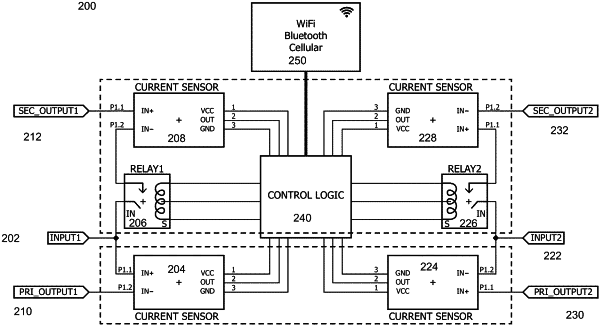| CPC H02J 3/0012 (2020.01) [H02B 1/26 (2013.01); H02J 13/00002 (2020.01); H02J 13/00036 (2020.01)] | 13 Claims |

|
1. A power distribution system for managing power distribution from in-home electrical wiring, the system comprising a power splitter device, the power splitter device comprising:
a housing having an electrical input source connection with a first input line and a second input line for two hot phases of alternating current electricity;
a primary electrical output and a secondary electrical output, the primary electrical output having a first primary output line and a second primary output line and the secondary electrical output having a first secondary output line and a second secondary output line;
a first current sensor connected to the first primary output, a second current sensor connected to the second primary output, a third current sensor connected to the first secondary output, and a fourth current sensor connected to the second secondary output;
a first relay connected between the first input line and the first secondary output;
a second relay connected between the second input line and the second secondary output; and
a control logic microprocessor configured to:
receive measurements of current from the set of first, second, third, and fourth current sensors;
determine an overcurrent condition based upon a plurality of measurements of current over a period of time from the set of four current sensors; and
disconnect power from the secondary electrical output connection by switching the first and second relay based upon the determined overcurrent condition.
|